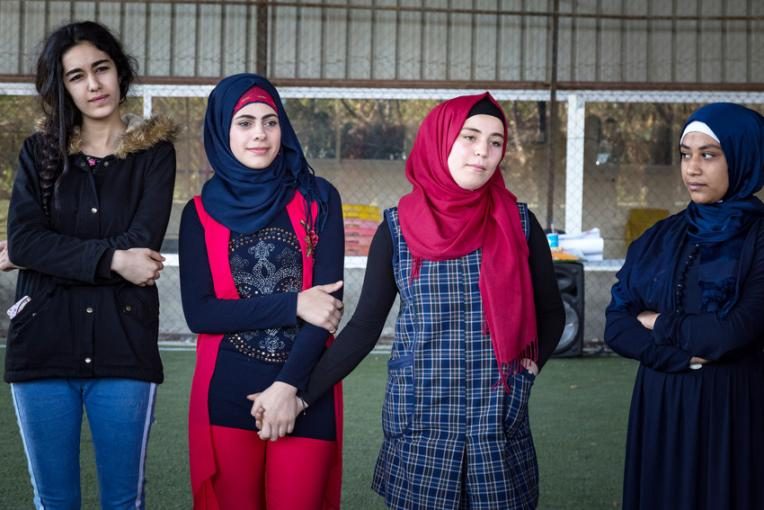25 NOVEMBER 2021
A decade of conflict in Syria has led to a sharp decline in girls’ rights, according to a new report by Plan International.

The research – carried out in Northwest Syria with women-led organisation Women Now For Development – examines the “invisible” toll that years of war, exacerbated by gender inequality, have taken on girls and young women.
Widespread poverty and a lack of education opportunities have led to a steep increase in adolescent girls becoming married as children – a practice which although not new to Syria, was relatively uncommon prior to the beginning of the conflict in 2011.
Interviews with girls, their parents and social workers suggest that the practice is increasing because desperate families see marrying their daughters as a way to cope with economic hardship.
Child marriage a growing issue
In 2006, UN estimates suggest 13% of Syrian girls were married before their 18th birthday. Today, ongoing conflict means that reliable data from inside the country is scarce – but a survey of young displaced Syrian women in Lebanon found that 41% were married before the age of 18 .
A significant number of mothers told Plan International and Women Now that although they oppose child marriage during peace time, during conflict it is a way to protect girls from harassment and violence while alleviating economic burden on the family, especially when a woman is the head of household.
Child marriage – recognised under international law as a human rights violation and both a form and a cause of violence against girls – has devastating consequences, often leading to girls dropping out of school or becoming pregnant at a young age.
Self-harm and suicide rates increasing
Nearly a third of those interviewed (32%) for the study said child marriage was a key reason why rates of self-harm and suicide have increased in Syria in recent years.
One psychosocial support worker who took part in the study said: “Early marriage is one of the main causes of mental and psychological problems for girls in these areas. They become more aggressive or depressed because they are unable to cope with the new roles and responsibilities. In some cases, the girls tried to commit suicide to end their misery”.
Almost all adolescent girls interviewed were against child marriage and on average, said the minimum legal age should be 20.
Although under Syrian law, the minimum legal age of marriage is 17 for girls, legal loopholes allow children to be married if it is judged as being in their best interest.
Girls’ education is suffering
The percentage of adolescent girls who attend school has also dropped markedly and is now just one in three (31%) . Prior to the conflict, 97% of primary school aged children were in education .
Most schools in Northwest Syria are still operational, but security concerns, child marriage and family obligations such as housework and taking care of younger siblings often prevent girls from attending lessons.
Being out of school frequently exposes girls to exploitation and abuse.
All girls interviewed also said that COVID-19 has made the situation worse, with many being unable to take part in online lessons due to high costs, poor internet and a lack of electricity.
School attendance is a key measure of gender equality, and the right to education is recognised under international human rights law. Being out of school frequently exposes girls to exploitation and abuse.
We are now calling on governments, donors and humanitarian actors working in Syria to prioritise child protection and prevention and response to gender-based violence and safeguard adolescent girls’ sexual and reproductive health and rights.
Plan International supports a minimum age for marriage at 18, regardless of gender, and calls on governments to close loopholes in legal frameworks that leave girls vulnerable to being married younger than this.
Hiba Alhejazi, Advocacy and Influencing Manager at Plan International said: “Our research paints a heart-breaking picture of the reality in Syria today. Girls’ rights are yet another a casualty of the war, as existing gender inequalities have become heightened over ten years of violence, with families being forced to flee their homes and rebuild their lives, often multiple times.
“From being forced into marriage to dropping out of school, adolescent girls in Syria are paying a high price for harmful and discriminatory gender norms. But they are often invisible, with their needs overlooked by the international community.
“Unless efforts to protect and safeguard girls’ rights are strengthened, there is a risk that a whole generation of girls in Syria will enter adulthood without having had the opportunity to go to school, become economically independent or contribute meaningfully to society – with profound consequences for wider society, peace building and long-term development.”
Categories: Education, Emergencies, Protection from violence


